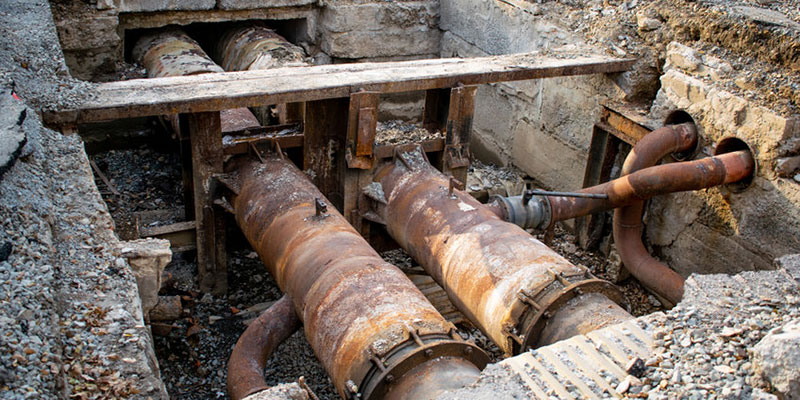Water and wastewater infrastructure have been earning low grades as systems age out, break down, and can’t meet needs.
As old systems are replaced, water planners have a chance to adopt decentralization, a new paradigm for the 21st century
Fluence last reported on the state of aging water infrastructure in the United States four years ago, and the country is still facing many of the same daunting challenges. Yet water management has made some improvements, and there is cause for optimism with a great deal of water infrastructure investment on the way.
Drinking Water Infrastructure
Drinking water infrastructure earned a D grade on the 2017 American Society of Civil Engineers (ASCE) Infrastructure Report Card, but in 2021, it earned a grade of C-. Some of the improvement over four years was due to technological innovation, expansion of federal financing programs, and utilities investing in their own networks as 12,000 miles of water pipe were scheduled to be replaced in 2020.
Pipelining routinely uses up the lion’s share of capital investment for water infrastructure renewal, replacement, or new construction projects. One way to keep pipe costs down is decentralized water and wastewater treatment. Fluence’s decentralized treatment uses small, modular plants strategically located at the point of need, reducing the requirement for pipelining.
Anywhere there’s a long pipe run to a distant drinking water source, it’s worth taking a second look at the problem through the lens of decentralization. Often, a previously unusable water source, such as seawater, a brackish aquifer, or a surface water body, can be treated or desalinated efficiently at the point of need with reverse osmosis (RO), saving long pipe runs and lowering pumping costs and maintenance requirements.
Wastewater Infrastructure
Wastewater infrastructure fared slightly better on the ASCE Infrastructure Report Card than drinking water did four years ago with a grade of D+, but its grade has not improved since. Thousands of American wastewater treatment plants are operating near capacity and 15% are now operating at capacity or beyond.
One efficient way to improve capacity is to update existing plants with advanced technology. For example, Fluence’s SUBRE brings membrane aerated biofilm reactor (MABR) technology to legacy plants without changing the plant’s footprint. Submerging SUBRE towers in existing chambers allows for a capactiy upgrade with no growing pains.
Wastewater infrastructure also faces the challenge of aging pipe networks. Because the quality of pipes installed from the late 1800s through the World War II era has diminished over time, more than a century’s worth of pipe will be reaching obsolescence in approximately the next two decades. The cost of replacing them nationally is staggering.
The same decentralized strategy used for water treatment can be applied to wastewater treatment. Under the traditional model, a large-scale central plant extends service to a city or region and its outlying areas with lengthy and expensive pipe networks. Plants must be large enough to handle the load.
Now envision the same service area with no large central plant. Instead, it’s an area dotted with smaller Fluence Aspiral™ modular MABR plants located strategically where they’re needed and scaled to fit demand. An array of such plants often can shoulder the load of a large central plant, but with significantly lower CAPEX.
Because Aspiral™ effluent meets the toughest reuse standards in the world — including California Title 22 — Aspiral™ plants transform wastewater from a problem to be disposed of into an asset that can be reused to benefit the local community. Aspiral™ effluent can be used for any number of municipal applications, including landscape irrigation, pressure washing, dust reduction, toilet flushing, and replenishing water features and park lagoons.
A New Era of Treatment
With the new $43 billion Bipartisan Infrastructure Law rolling out as the largest federal infrastructure investment in history, water managers have a chance to break away from traditional strategies that no longer make sense.
Reach out to the experts at Fluence to avoid buying 20th-century problems at 21st-century prices. With Fluence’s Water Management Services, clients can take advantage of flexible financing arrangements like build-own-operate and build-own-operate-transfer to get the infrastructure they need with no upfront investment and no operations and maintenance burdens.

